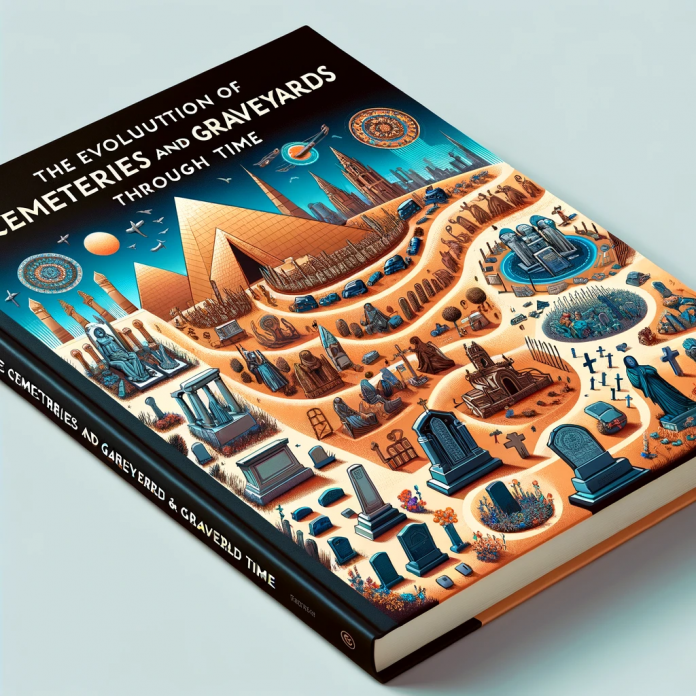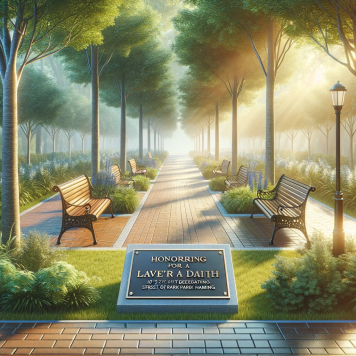Understanding the evolution of cemeteries and graveyards through time offers a unique perspective on the cultural, social, and religious practices of different civilizations. From the earliest burial grounds to the modern memorial parks, the way we honor and remember the deceased has undergone significant changes. This article delves into the fascinating journey of these sacred spaces, highlighting their transformation and the factors that influenced them.
Early Burial Practices
The earliest known burial sites date back to the Paleolithic era, around 100,000 years ago. These early graves were often simple pits dug into the ground, with the deceased placed in a fetal position. The presence of grave goods, such as tools and food, suggests a belief in an afterlife.
As societies evolved, so did their burial practices. The construction of megalithic tombs, such as the dolmens and passage graves, marked a significant shift. These structures, built with large stone slabs, were communal burial sites, reflecting a growing sense of community and social hierarchy.
Development of Monumental Burials
The ancient Egyptians took burial practices to a new level with the construction of pyramids and elaborate tombs in the Valley of the Kings. These monumental burials were reserved for pharaohs and high-ranking officials, reflecting their status in society and the belief in a grand afterlife.
In contrast, the common people were buried in simple desert graves. However, the practice of including grave goods, such as food, jewelry, and amulets, was widespread, indicating a shared belief in life after death.
The Rise of Cemeteries
The concept of a designated burial ground, or cemetery, emerged around the 5th century BC in ancient Greece. These were often located outside city walls and included both simple graves and elaborate monuments. The Romans adopted a similar practice, with roads lined with tombs and mausoleums leading out of the city.
With the spread of Christianity, burial practices underwent another transformation. The Church encouraged burial in consecrated ground, leading to the establishment of churchyards. These were initially reserved for clergy, but over time, they became the final resting place for the laity as well.
Changes in the Middle Ages and Beyond
During the Middle Ages, churchyards became the primary burial grounds in Europe. However, with growing urban populations, these spaces quickly filled up. This led to the practice of reusing graves, with old bones often exhumed and placed in charnel houses.
The 19th century saw a shift towards garden cemeteries. These were designed as peaceful retreats, with winding paths, trees, and ornamental features. The idea was to create a space that was not just for the dead, but also for the living to enjoy and remember their loved ones.
Modern Cemeteries and Memorial Parks
Modern cemeteries often combine elements of their predecessors. They are typically landscaped spaces, with individual or family plots marked by headstones or plaques. Many also have areas for cremated remains, reflecting changing preferences and beliefs about death and the afterlife.
Memorial parks, on the other hand, aim to create a more natural environment. Instead of upright headstones, they use flat markers that blend in with the landscape. Some also offer eco-friendly options, such as biodegradable coffins and tree burials.
The Role of Technology
Technology has also left its mark on cemeteries and graveyards. Online databases and GPS mapping make it easier to locate graves, while QR codes on headstones can provide information about the deceased. Some cemeteries even offer virtual tours, allowing people to visit from the comfort of their homes
.
As we move into the future, cemeteries and graveyards will continue to evolve, reflecting our changing attitudes towards death and remembrance. Whether they are simple burial grounds or elaborate memorial parks, they serve as a testament to our desire to honor and remember those who have passed before us.


-banner.png)





